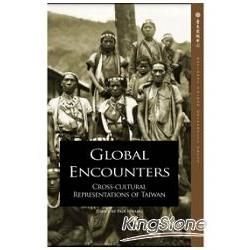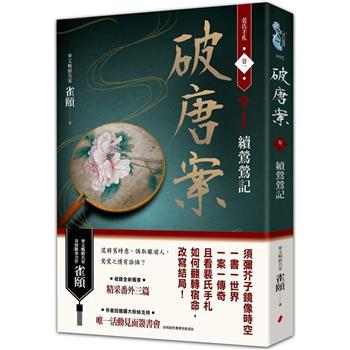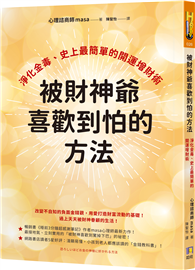| FindBook |
|
有 1 項符合
Lim Lee Ching的圖書 |
 |
$ 352 ~ 360 | Global Encounters:Cross-cultural Representations of Taiwan
作者:Jeremy Fernando、Timothy R. Fox、Bennett Yu-Hsiang Fu、Paoi Hwang、Lim Lee Ching、Terence Russell、Chih-ming Wang、John Wu、Jr.、Isaac Yue 出版社:國立台灣大學出版中心 出版日期:2013-01-25 語言:繁體書  共 4 筆 → 查價格、看圖書介紹 共 4 筆 → 查價格、看圖書介紹
|
|
|
內容簡介
目錄
Acknowledgements
Introduction
The Voyage of the Sandeq Explorer: A Taiwanese Adventure in the Austronesian World by Terence Russell
Tribal Gothic: Supernatural Images of Resurrection and Insurrection in Taiwanese Aboriginal and New Zealand Maori Writing by Timothy Fox
Where Is Her(e): M?tissage as Indigenous Intervention in Taiwanese Liglav A-Wu’s Who Will Wear the Beautiful Garments I Weave? and Canadian Lee Maracle’s I Am Woman: A Native Perspective on Sociology and Feminism by Bennett Yu-hsiang Fu
Risky Fiction: Betrayal and Romance in The Jing Affair by Chih-ming Wang
Heart of Madness: Identity Crisis and Cultural Conflicts in the Colonial World
by Paoi Hwang
Alienation, Marginality, and the Re-Imagination of Cultural Identity: The Impact of Colonialism and Shi Shuqing’s Defamiliarization of Taiwan and Hong Kong by Isaac Yue
Transcending Intellectual Boundaries: The Lyrical Phenomena of Fang Wenshan by Lim Lee Ching
The Vanishing Self: A Suggestion by John Wu, Jr.
Elliptical Taiwan or On Beauty by Jeremy Fernando
Notes on Contributors
Index
序
序
This collection engages with the political debates on Taiwan’s identity and nationhood while also attempting to step beyond them. The first three essays focus on aboriginal culture and literature because a major development in the preserving and revising of Taiwan’s culture has centered on aboriginal people and their rights. When the Chinese Nationalists arrived in Taiwan at the close of the Chinese Civil War, they promoted an ideology that not only sought to overturn the previous Japanese nationalism but also strove to suppress the Taiwanese native and indigenous presence. One approach toward this goal was forced name changing. Just as the Japanese colonial authorities had called upon name changing as a form of assimilation, so too the Nationalist regime made it compulsory for tribal people to adopt Chinese names. Under the leadership of Yi-chiang Pa-lu-erh, the Alliance of Taiwanese Aborigines pushed for democratization in requesting “the right to self-government, [and] determining the course of their own affairs in all matters except foreign policy and defence.” Terence Russell’s “The Voyage of the Sandeq Explorer: A Taiwanese Adventure in the Austronesian World” uses Anthony D. Smith’s argument on ethnicity to establish the Austronesians as having the earliest and most legitimate claim to Taiwan, but he also points out that allusions to such a heritage can obscure Taiwan’s push for nationhood insofar as the Austronesian identity is shared by many countries in the Pacific. Timothy Fox’s “Tribal Gothic: Supernatural Images of Resurrection and Insurrection in Taiwanese Aboriginal and New Zealand Maori Writing” further explores this Austronesian connection between aboriginal writing in Taiwan and New Zealand. By looking at supernatural elements in both cultures in relation to the Western Gothic tradition, Fox is able to demonstrate that a nation’s indigenous tribal presence is vital to the formation of its identity. Bennett Yu-hsiang Fu’s “Where Is Her(e): M?tissage as Indigenous Intervention in Taiwanese Liglav A-Wu’s Who Will Wear the Beautiful Garments I Weave? and Canadian Lee Maracle’s I Am Woman: A Native Perspective on Sociology and Feminism” takes the importance of indigeneity one step further. Fu argues that it is inevitable for cultures to mix and merge over time; thus, it is the m?tissage that allows marginalized groups like the aboriginal people of Taiwan and Canada to form a common solidarity to overturn hegemonic discourses and policies.
The martial law that sought to suppress the Taiwanese spirit not only affected the aborigines but also the majority of Taiwan’s inhabitants who saw themselves as “Taiwanese.” The second set of essays provides closer analyses of colonization and its effects on Taiwan. Chih-ming Wang’s “Risky Fiction: Betrayal and Romance in The Jing Affair” is based on a novel that fictionalizes the politics in Taiwan in the 1960s. The Jing Affair is written by an American government official who fantasizes about Taiwanese revolution and the Chinese Nationalist government’s betrayal of its American ally. Paoi Hwang’s “Heart of Madness: Identity Crisis and Cultural Conflicts in the Colonial World” is a more factual analysis of how colonization can lead to madness in both the individual and the nation. Hwang’s essay compares the works of seminal writers like Joseph Conrad, Chinua Achebe and Wu Zhuoliu to theorize on the damage of cultural conflicts under colonial rule and the impact it has on nation and identity formation. Isaac Yue’s “Alienation, Marginality, and the Re-Imagination of Cultural Identity: The Impact of Colonialism and Shi Shuqing’s Defamiliarization of Taiwan and Hong Kong” examines the advantages and disadvantages of cultural defamiliarization and alienation. Yue uses the works of Taiwanese author Shi Shuqing to examine the literary constitution of Hong Kong. He concludes that while colonization may adversely affect the individual, the resulting “deformity” may survive and thrive if turned to good use.
The final three essays uses alternative approaches to explore Taiwan in relation to the world. Lim Lee Ching’s“Transcending Intellectual Boundaries: The Lyrical Phenomena of Fang Wenshan” examines music as an alternative cultural space. He believes the global appeal of Taiwanese pop music comes from its multifarious influences; it has a voice that speaks of various historical and cultural ties. As a true global entity, Fang’s music experiments with the unfamiliar and yet is nostalgic and not forgetful or resentful of its past. The final two articles are philosophical reflections. John Wu—an American-born Chinese whose father, John C. H. Wu (an important juristic philosopher of the 20th century), was from Shanghai—spent most of his adult life in Taiwan. His “The Vanishing Self: A Suggestion” draws on Eastern and Western philosophies and teachings to form an interesting view of Taiwan. Jeremy Fernando’s “Elliptical Taiwan or On Beauty” completes this collection by entreating us to ask “What’s in a name?” What does it matter if a place is called Formosa or Taiwan? Despite all the defining characteristics and images that a nation may present, it is the ellipses and the absences that allow islands like Taiwan to be open to change, and to be truly beautiful.
|











